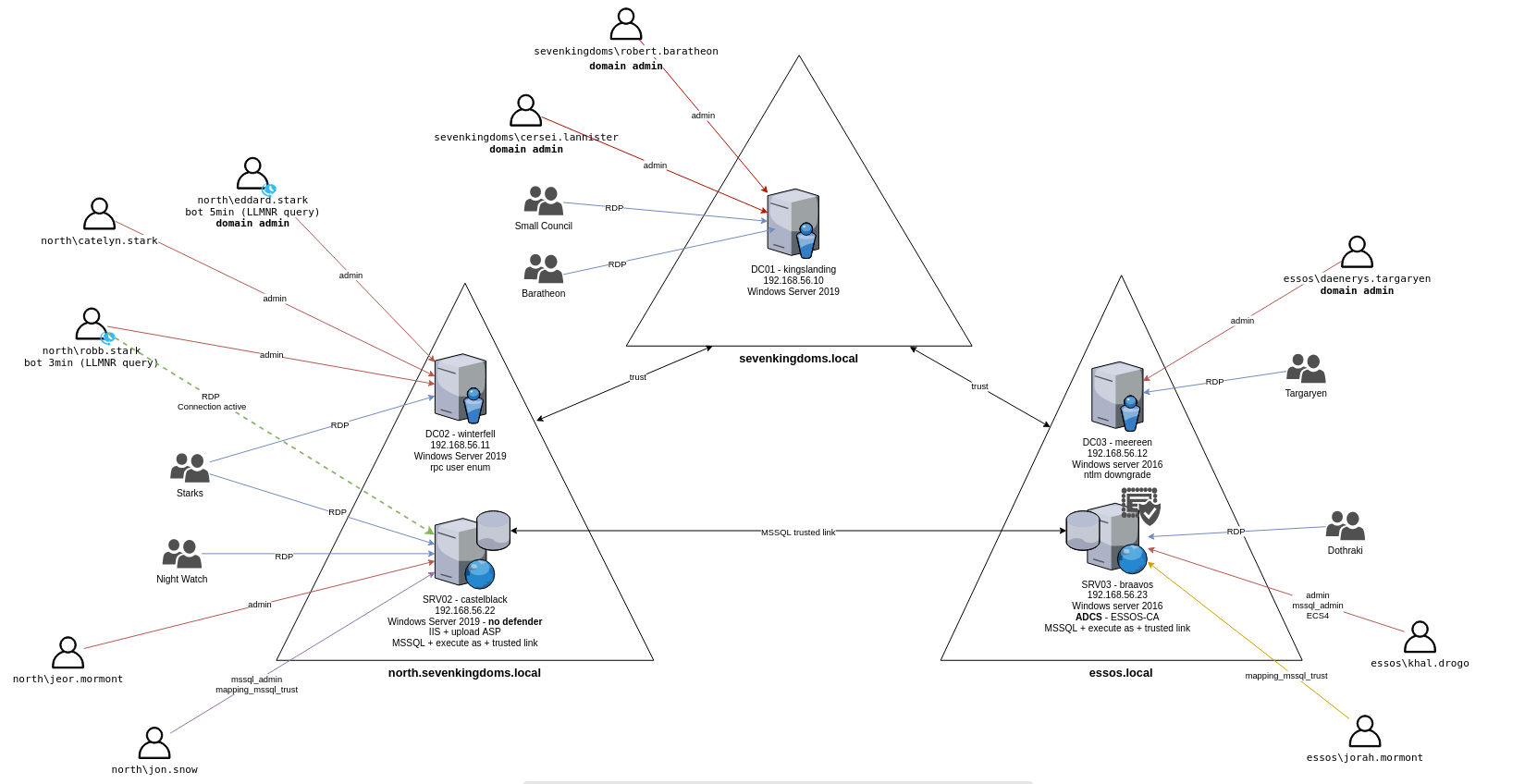GOAD Home Lab
This post contains material that I used to teach or for a project at my university. As a result, the text of the images can appear in Hungarian, but I have translated it into English.
The author of this lab is Mayfly who was kind enough to make this lab publicly accessible and provide amazing documentation as I set up the lab. (I am going to link Mayfly’s documentation at the end of the resources section) There are many ways to set up this home lab and I even found an amazing video from Conda that showcased how an individual can easily deploy this. (I am going to link the video to the resources section)
 https://github.com/Orange-Cyberdefense/GOAD/blob/main/docs/img/GOAD_schema.png
https://github.com/Orange-Cyberdefense/GOAD/blob/main/docs/img/GOAD_schema.png
The bare minimum hardware requirements for the version I was setting up were 24GB of RAM and 120GB of storage.
I am going to split my write-up into two sections, one of them is going to focus on how I troubleshoot my problems along the way as I know it can be beneficial for later. The other section is going to focus on the commands and steps I did to set up the home lab.
The problems I faced during the setup (as I followed the steps during the setup video):
As the lab is intended to be installed from a Linux host and was tested only on this for the documentation. The wise step was to use nested virtualization this way the lab can be set up within a VM.
As I use VMware nested virtualization was not of an easy step because I needed to reproduce the following steps to make it work.
Also had to turn off memory integrity.
After these steps, I was able to start my VMware host Linux machine with the following setting, which enabled nested virtualization:
I set up a dedicated VM for this task and decided to use a separate installer image. With a new set, I installed VirtualBox with the following command.
1
sudo apt install virtualbox -y
But this was not enough, on a newly installed .iso image you need to install the kernel modules.
You can check the status with the following command:
1
sudo service virtualbox status
You can check the kernel modules with the following command:
1
uname -r
And after this command, I needed to download the right ones:
1
sudo apt install linux-headers |kernelmodules|
A possible workaround would be to install a pre-built virtual machine and after installing VirtualBox it is going to work right out of the box.
Also, I ran into the problem that I did not have enough storage dedicated to the VM and I found a tool named GParted to be most efficient to resolve this issue.
After resolving all my upcoming issues I used to follow a chain of steps to set up the lab:
1
sudo apt install virtualbox -y
1
sudo apt install vagrant
I also went with the docker installation method as it seemed like the fastest and easiest.
1
sudo apt install docker.io -y
1
vagrant plugin install vagrant-reload
1
gem install winrm winrm-fs winrm-elevated
After installing all these requirements I installed the GitHub directory related to the project.
1
git clone https://github.com/Orange-Cyberdefense/GOAD.git
I changed my directory to GOAD and ran a check script to make sure I was ready to go and install.
1
./goad.sh -t check -l GOAD -p virtualbox -m docker
After a successful affirmation, I can run the install script as well.
1
./goad.sh -t install -l GOAD -p virtualbox -m docker
This was going to run for a few hours but after that, I was good to go. It is important to note that the labs can be started with the following command:
1
./goad.sh -t start -p virtualbox -l GOAD -m docker
Resources:
Video I used for the setup:
- https://www.youtube.com/watch?v=fXausmYcObE
The GitHub page I also used along my setup:
- https://github.com/Orange-Cyberdefense/GOAD
The specific documentation I used:
- https://github.com/Orange-Cyberdefense/GOAD/blob/main/docs/install_with_virtualbox.md
.png)
.png)
.png)
.png)
.png)
.png)